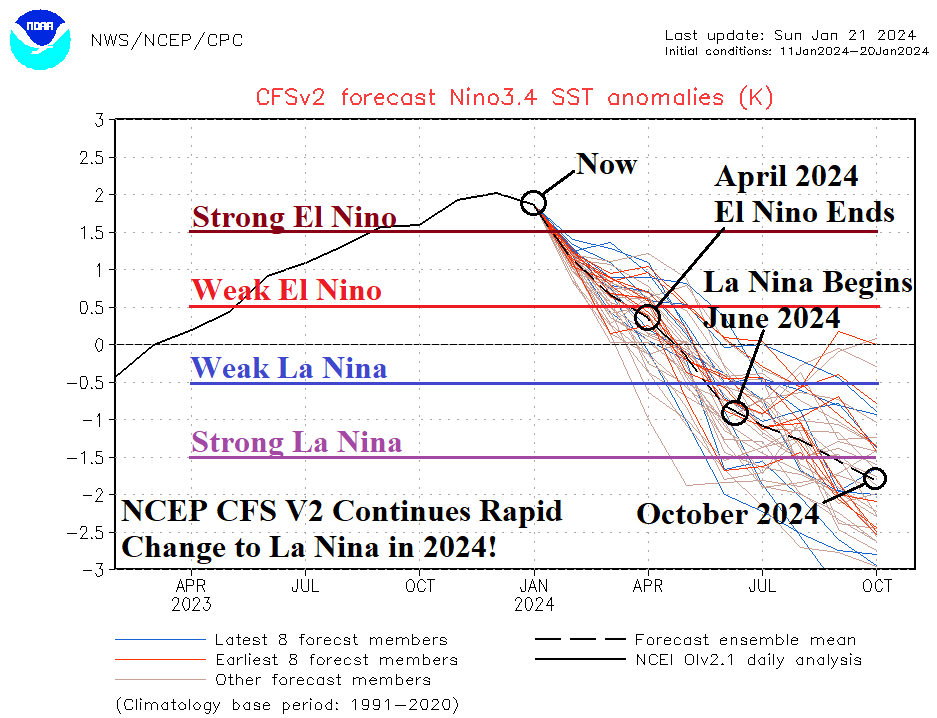
Upper Ocean Heat in Equatorial East Pacific Diminishing Fast Signaling El Nino’s Demise Ahead
01/22/2024, 8:02 am EST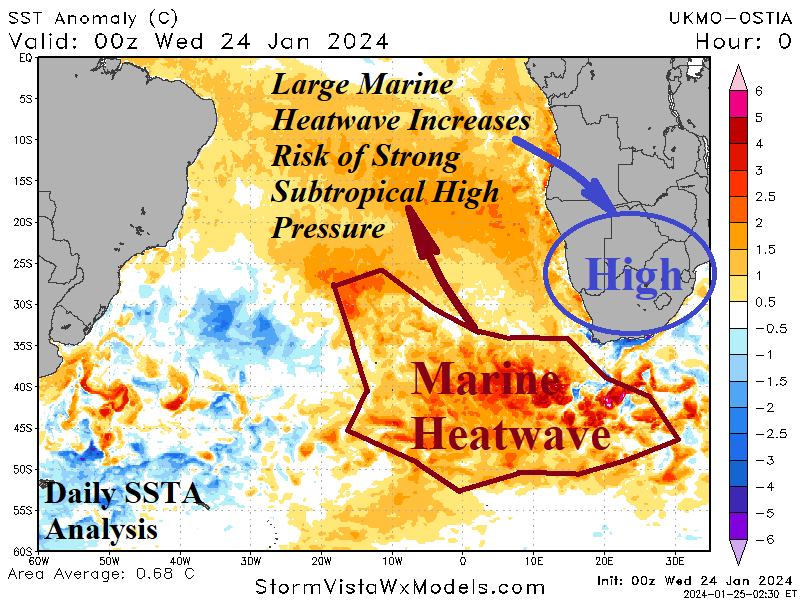
Marine Heatwave Inspires Emerging South Africa Drought
01/25/2024, 8:26 am ESTHighlight: Another warmer than normal year in 2025 across the U.S. with drought threat for Texas/Mid-South U.S. during summer/autumn. A hot 2025 summer and mild 2025-26 winter.
Executive Summary: The inaugural year-2 ahead climate forecast for North America is issued. The forecast is valid for meteorological spring 2025 through winter 2025-26. Forecast highlights include a wet spring in Texas/Louisiana, a (nationally) hotter than normal summer, warmer than normal autumn, and possibly a vigorously warm winter 2025-26 season. Important dryness leading to drought emerges in Texas during the summer season and expands to the Mid-south States by autumn. The winter 2025-26 forecast is unusually dry.
Climate summary: As discussed in the North America season 1-4 ahead climate summary, the projected ENSO phase for 2025 is La Nina with varying intensity. La Nina is likely to continue through the northern hemisphere winter 2025-26 season. Oceanic warming in the middle latitudes of both the North Pacific and North Atlantic continue in 2025. One exception is regeneration of the North Atlantic warm hole (NAWH) south of Greenland and most prominent during spring and early summer.
Forecast methodology: A constructed analog based on past similar ENSO regimes combined with optimum climate normal (OCN) correlated to the atmospheric upper air pattern generates the seasonal forecasts beginning with meteorological spring 2025 and ending with meteorological winter 2025-26.
MAR/APR/MAY 2025: The projected upper air pattern for meteorological spring 2025 is a return of a weak trough across the Interior West U.S. East of this feature, occasional moist southerly flow out of the Gulf of Mexico spawns heavy rain events most dominant on Texas/Louisiana. North of the wet weather zone, dry climate is projected for the Ohio Valley to New England. The spring season is warmer than normal across the Southeast U.S. and cooler than normal for the northwest quadrant of the U.S. Dryness is dominant across Southern Canada.
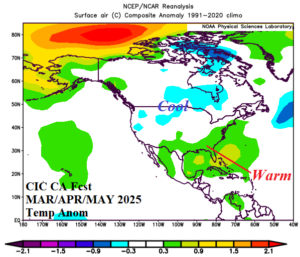
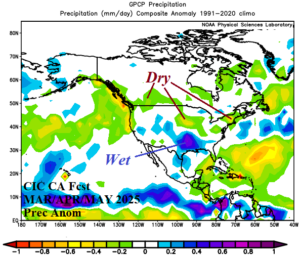
Fig. 1-2: The Climate Impact Company constructed analog forecast for temperature and precipitation anomalies during MAR/APR/MAY 2025 across North America.
JUN/JUL/AUG 2025: Another hotter than normal summer is expected across most of North America in 2025. Included is widespread anomalous warmth in Canada while the Southern Canada Prairies remain dry as drought continues. A dry climate develops in Texas and Florida while the Mississippi Valley is a wet zone possibly due to inland shifting tropical events during late summer. Hottest risk in the U.S. is across Northwest Texas and Montana.
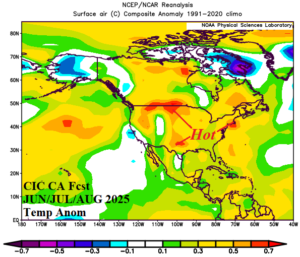

Fig. 3-4: The Climate Impact Company constructed analog forecast for temperature and precipitation anomalies during JUN/JUL/AUG 2025.
SEP/OCT/NOV 2025: A major drought is developing in Texas to the Mid-south U.S. region. The developing dryness in this region during summer expands and intensifies during autumn 2025. There is wet weather risk on the U.S. East Coast possibly related to early season tropical events. A warmer than normal autumn season is forecast for almost all of North America.
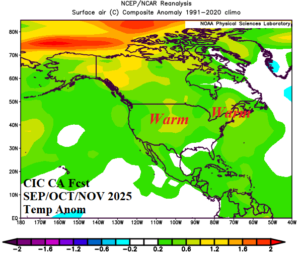
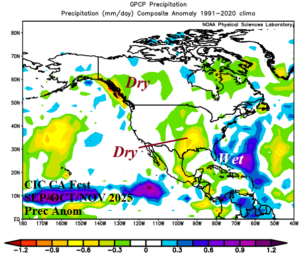
Fig. 5-6: The Climate Impact Company constructed analog forecast for temperature and precipitation anomalies during SEP/OCT/NOV 2025.
DEC/JAN/FEB 2025-26: Meteorological winter 2025-26 is somewhat warmer than normal for Canada and the Central/East U.S. Very cold conditions are locked in the northern latitudes across Alaska and Greenland. Arctic air outbreaks into the U.S. during the 2025-26 winter season are unlikely. A dry climate is likely to persist in parts of Texas expanding eastward across the Gulf of Mexico States. The U.S. West Coast is also drier than normal.
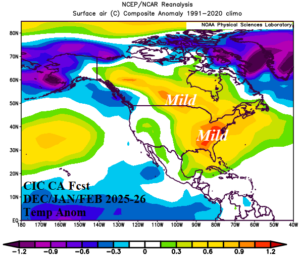

Fig. 7-8: The Climate Impact Company constructed analog forecast for temperature and precipitation anomalies during DEC/JAN/FEB 2025-26.
![Climate-Impact-Company-logo-sm[1]](https://climateimpactcompany.com/wp-content/uploads/2023/08/Climate-Impact-Company-logo-sm1.png)
